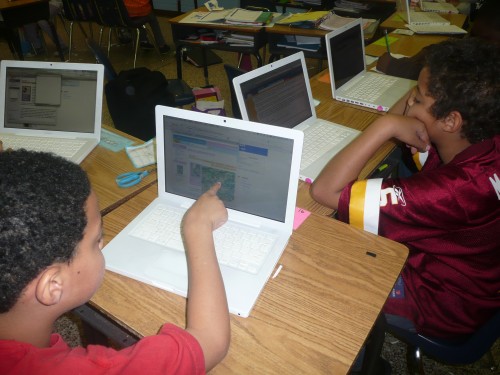Submitted by: Pam Graham
Collaborators: Sue Marion, Katlyn Stutts, Joy Herod
School: R.C Longan Elementary School
Summary
To prepare for a field trip to the Science Museum of Virginia, students viewed the museum website as well as advertisement. During the field trip, students explored different areas of the museum in collaborative groups while capturing their experiences on camera and video. They utilized the museum volunteers to fully understand exhibits. When they returned, the students wanted to create their own portrayals of their experiences in the museum in the style of advertisements. In their collaborative groups, students dove into a multitude of advertisement genres. Students researched advertising and viewed many different types of advertisements. During their research, students synthesized information to answer essential questions about what makes and advertisement persuasive. Students selected a target audience for their advertisements and evaluated their ideas, information from the museum and volunteers, pictures, videos, and research from internet websites to create advertisements that would appeal to their selected audience. Students created commercials, viral videos, podcasts, presentations, flyers, and websites advertising the Science Museum of Virginia. Students used innovative thinking, various persuasive techniques, and multiple technologies to develop an advertisement that would be persuasive and engaging for their target audience. Upon completion, students developed a website design to store their advertisements and communicated with the Science Museum about their final projects. The Science Museum of Virginia Director of Communications visited the classes for students to pitch their advertisement and learn more about the real life advertising process. Collaborative groups reflected on the success of their advertisement using a rubric.
TIPC Ratings
Approaching: This lesson falls into the high-end of the approaching domain of the TIP-C. Students were challenged to find, assemble, and organize information from various sources (digital, print, human) in order to address an authentic task. Students constructed questions to guide their own research.
Ideal: This lesson falls into the low-end of the ideal domain of the TIP-C. Students communicated with Science Museum staff via a variety of digital media before and after the project. In addition, they utilized a digital tool to reflect upon both the project product and process.
Ideal: This lesson falls into the low-end of the ideal domain of the TIP-C. Students were given the opportunity to select the digital platform best suited to present the information they had gathered. In addition, they were provided a digital forum to reflect upon both project product and process.
Ideal: This lesson falls into the low-end of the ideal domain of the TIP-C. Students synthesized existing and self-generated knowledge to create new ideas and products as well as took strategic risks to support innovation. In addition, students utilized a digital tool to reflect upon the creative/innovative process.
Download Files
Click here to download lesson files.
Contents:
- Lesson Plan
- Student Images
- Student Work Product Page
- Reflection Page
- Presentation Rubric
- Research Planner




